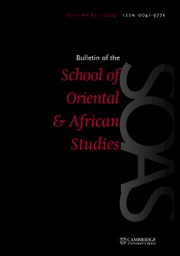This book is among the most recent volumes on the work of award-winning Egyptian architect Hassan Fathy (1900–1989). It can be considered an edited volume with contributions by Damluji, mostly contemporaneous with Fathy, more recent contributions by Bertini, and posthumous contributions by Fathy. The book's content is structured in two parts. The first covers Fathy's theoretical conceptions, research works, and the discourse upon which his practice was based. The second features several of Fathy's design works, as well as design guidelines and construction ideas he developed. The volume is rich in illustrations of Fathy's buildings, design drawings, and paintings, and includes notes, a bibliography of published and unpublished texts by Fathy, and an index.
A major argument, which recurs in several chapters, is that relating to Fathy's main legacy: the architect sought traditional architecture that communicated Arab cultural identity, and he succeeded in creating “a school of thought in Islamic and Arab architecture” (p. 15). Bertini argues that the traditional Nubian house constituted an “archetypal reference” for Fathy's model of the Arab house (p. 68), although she acknowledges that vernacular architecture in several Arab cities served as a reference too. The process by which Fathy developed his architectural language, according to Bertini, involved the “transposition” (p. 71) of elements from their original context and “re-contextualization” and “re-assembly” of these elements (p. 249) to form “a new lexicon” (p. 71). Bertini, however, does not address the extent to which Fathy's architectural language was new, nor did she engage the influences of Western theoretical and built works on Fathy's ideas, which had been established in James Steele's Architecture for People: The Complete Works of Hassan Fathy (New York: Watson-Guptill, 1997) and Leïla el-Wakil's edited volume Hassan Fathy: An Architectural Life (Cairo: The American University in Cairo Press, 2018; published in French in 2013). Bertini rightly argues that Fathy's “process of synthesis and abstraction” ignored the specific local context, producing “generic” Arab houses (p. 278). These have principal elements such as the courtyard, qa‘a (reception hall), majaz (bent entry), iwan (hall with walls on three sides only), and malqaf (wind catcher), building techniques such as vaults and domes, and complementary elements such as mashrabiyyahs (latticework screens) and claustras (pierced walls). For Bertini, in Fathy's architecture “geometry acted as the expedient” (p. 246); Fathy would then add the climatic role, legitimizing geometry and establishing his definition of architecture as “the product of the interaction between environment and mankind” (p. 278).
Another important argument in the book is that Fathy devoted much of his life to solving the problem of housing for the poor in rural areas, finding the solution in mud-brick architecture. In this context, Bertini argues that Fathy had “an idealized vision of the country” (p. 210), which contributed to the failure of his New Gourna (1945–47) village project. For Bertini, the “acontextual functions” (p. 208) that Fathy included in the project involved the reinvention of the physical, social, and economic structures of the settlement, which was another reason the project was unsuccessful. Here Bertini misses connecting such functions with the programmes of Western models that influenced Fathy's project, which Nicholas Warner and el-Wakil had highlighted in Hassan Fathy: An Architectural Life. Reflecting Fathy's own view and his frustration with government bureaucracy, Damluji partly attributes New Gourna's failure to the system with its consumerist approach to development, which was inconsistent with Fathy's ideas, and the disconnect between the goals government officials had for the project and the reality, interests, and needs of the residents.
Both Damluji and Bertini argue that Fathy's village designs can be considered urban designs. The authors connected that with the influence of Greek architect and urban planner Constantinos Doxiadis (1913–75). Bertini argues that the period Fathy spent working with Doxiadis (1957–61) had a strong role in forming Fathy's later career. According to her, that included his theoretical work on the city and design projects such as New Baris (1965) in which Fathy used Doxiadis's Ekestics or “the science of human settlements” (p. 103). For Bertini, both Fathy and Doxiadis shared focus on the cultural context and national conception, which in Fathy's case was a pan-Arab identity. However, Bertini rightly argues that the two followed different methods. While Doxiadis adopted mass construction, prefabrication, repetition, and generalization, Fathy adopted self-construction and individuality. And while Doxiadis's design process was deductive, Fathy's was inductive.
Hassan Fathy: Earth & Utopia provides exhaustive coverage of Fathy's work. However, the book narrates and describes more than it analyses or critiques, with Bertini's contributions being more analytical and critical than the other parts. The book has some repetition, such as in Damluji's and Bertini's chapters on New Gourna and among several of Fathy's texts, and a few sections stray away from focusing on Fathy, for example Rifat Chadirji's perspective on Doxiadis's work in Iraq. The book lacks a concluding chapter, which could have summed up important arguments, showed where Fathy's school of thought in Islamic and Arab architecture is today, or provided a direction for future research on the topic. Still, that Damluji worked with Fathy at an early stage of her career and some of Fathy's writings that the volume documents are published in English for the first time add value to this work. Furthermore, the diverse textual materials the book compiles, including interviews with Fathy, master builders that worked with him, and inhabitants of his projects, reports and letters by Fathy and, particularly, Fathy's Al-Mashrabiyyah and Land of Utopia stories differentiate the book from other volumes on the topic and shed light into different sides of Fathy's life, works, and ideas. Minor shortcomings aside, Hassan Fathy: Earth & Utopia is a valuable resource for students who wish to learn about Fathy's extensive work or scholars seeking to expand on this area of research.



